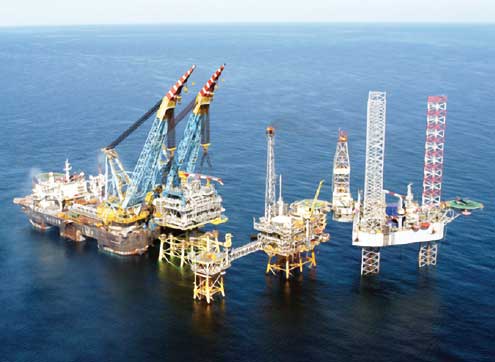NOVA SCOTIA CANADA: THE NEXT PLAY
Sable Offshore Energy Project reaches peak production
A half-billion dollar compression deck, part of the original plan for the Sable Offshore Energy Project (SOEP), has boosted production to 450 MMcf of gas and 20,000 bbl of NGL per day.
This developmental milestone occurred with the full commissioning of field-wide compression at the Thebaud platform, allowing for the continuance of world class performance from the project. “The compression project positions the project to get back to peak production levels,” Brent Janke, Sable Asset Manager for ExxonMobil said at a conference recently.
“In parallel, we continue to drive operating efficiencies into our business and work to leverage technical solutions to make future investments attractive and economically competitive on a global scale,” he said.
Janke says current production performance has been increasing with operating uptime, averaging 95%. He calls that “world class performance,” and adds that the company is focusing on increasing its efficiency. The compression platform increased gas production by 20 to 25%. The platform topside is 34 m wide X 40 m high and weighs 7,600 tonnes. The Thebaud platform is 5,500 tonnes, and the process platform bridge is connected to the wellhead platform. The platform is in 28-m water depth and is located 10 km west of Sable Island.
SOEP is Canada’s first offshore gas project. SOEP’s five gas-producing fields include: Thebaud (discovered 1972), Venture (discovered 1978), Alma (discovered 1984), North Triumph (discovered 1986) and South Venture (discovered 1982). SOEP will cumulatively produce an estimated 1.7 Tcf of gas over the life of the project. The SOEP partners are ExxonMobil (operator), Shell Canada Ltd., Imperial Oil Resources, Pengrowth Corp. and Mosbacher Operating Ltd.
Nova Scotia Department of Energy Director Sandy MacMullin, says the 15-year history of offshore Nova Scotia commercial production, which started with COPAN in 1992, demonstrates that reservoirs in the Sable Island area can be very prolific producers. He says the infrastructure, including the subsea pipeline, is important for the continued growth of offshore Nova Scotia.
SOEP is a $5 billion project, divided into two tiers. Tier 1 was completed in December 1999 and involved the development of Thebaud, North Triumph and Venture gas fields through three platforms, a subsea pipeline, a gas plant at Goldboro, and an NGL pipeline to a fractionation plant at Point Tupper.
 |
The giant Saipem S7000 crane eases the compression platform into place at Sable�s Thebaud platform. A peak workforce of 550 were involved in the project, which significantly improved production.
|
|
The Maritimes and Northeast Pipeline transports gas from Goldboro to markets in the Canadian provinces of Nova Scotia and New Brunswick, as well as to destinations in the New England area of the United States-the largest natural gas growth market in North America.
Tier 2 of SOEP commenced with the Alma field in late 2003, while production from the South Venture field began in late 2004. A total of 21 production wells have been drilled to extract the 1.7 Tcf of gas reserves. Recently, the project produced over the 1 Tcf mark. These five fields involve rollover anticlinal structures associated with down-to-basin growth faults. Reservoirs in the Thebaud, Venture and South Venture fields are deep and overpressured, situated in the Mic Mac and Mississauga Formations, while the North Triumph and Alma fields contain reservoirs in the Mississauga Formation, all Cretaceous in age.
The SOEP fields are within a 40 km radius of Sable Island, producing from prolific sandstone reservoirs as deep as 5,000 m. In the Sable Island area, there are 23 existing significant discoveries, two of which were developed in association with the COPAN Project, five of which are associated with SOEP and one of which is associated with the Deep Panuke Project. Of the remaining 15 significant discoveries, there are several with the potential to be developed and tied into the existing offshore infrastructure. Once SOEP production peaks, increased capacity in its offshore infrastructure could become available. 
|



